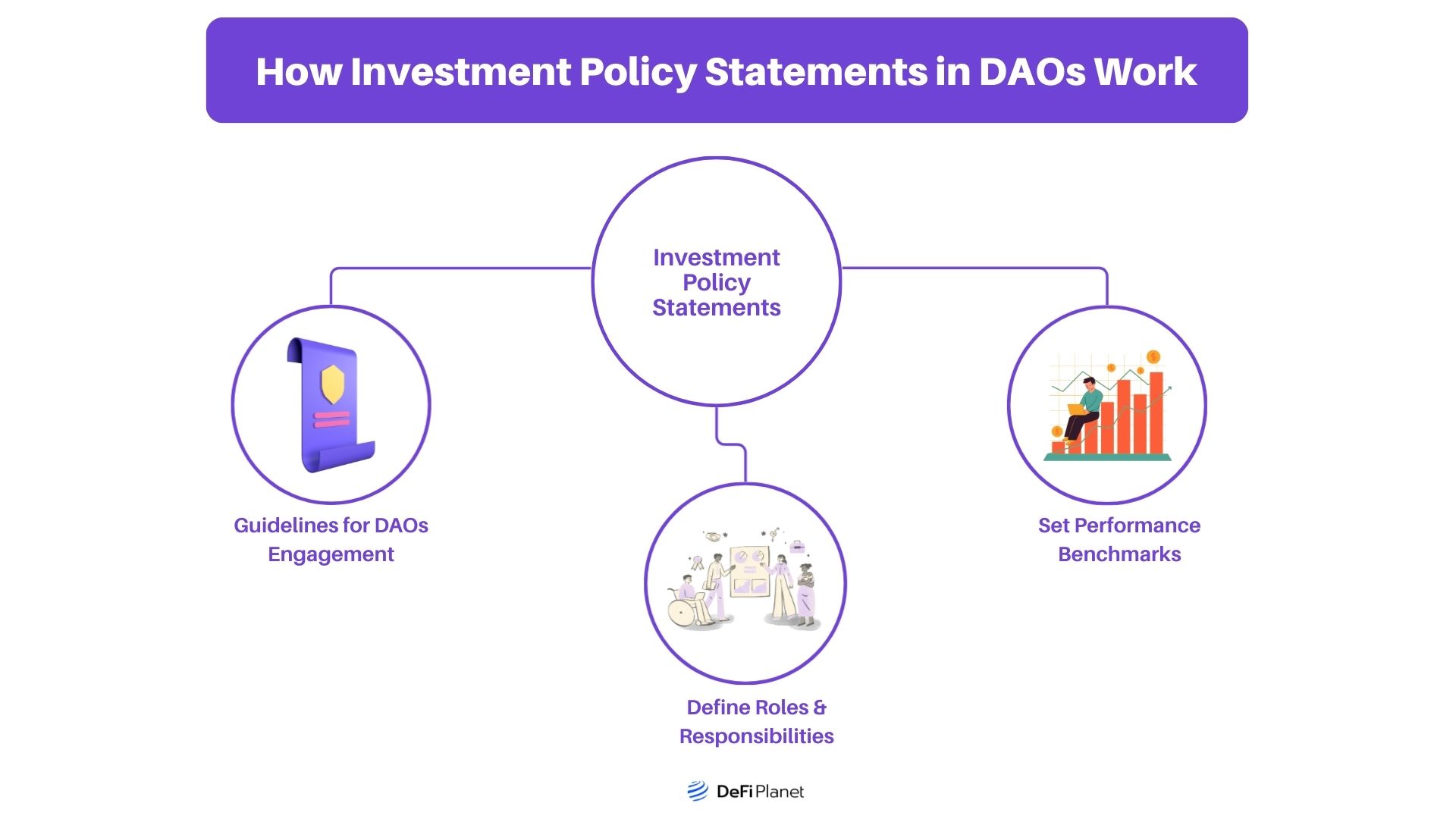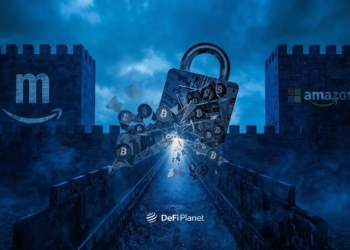As the crypto space evolves, many DAOs are now managing millions of dollars in treasury funds and community-led initiatives. These funds are used for things like paying contributors, funding projects, giving out grants, and investing in other protocols. But with so many people involved, making sure everyone agrees on how money should be spent is not always easy, and that is where something called an Investment Policy Statement (IPS) comes in.
An Investment Policy Statement is a written plan that explains how an organization will manage its money. It is common in traditional finance, and now DAOs are starting to use it too because the IPS helps everyone in a DAO stay on the same page by laying out clear rules and goals for how the treasury should be handled. This includes things like where the money can be invested, how much risk is okay, and what the long-term goals are.
Why DAOs Need an Investment Policy Statement
One of the things that makes DAOs special is that they don’t have a CEO or board of directors, and what this means is that decisions are made by members who vote using tokens. This is called DAO governance. While this setup can be more democratic, it also creates challenges, and without a shared long-term vision, a DAO can get pulled in many different directions. Members might vote for short-term spending that feels good in the moment but hurts the organization in the long run.
This kind of misalignment often occurs when there is no clear investment plan, leading to disagreements on investment risk levels or the allocation of savings versus spending. Some may want to buy risky tokens that could grow fast, while others want safer options like stablecoins. That is why having an Investment Policy Statement (IPS) is so important. It acts as a guide for everyone involved.
What’s Inside an IPS?
A good Investment Policy Statement includes a few key parts: First, it defines the long-term strategy of the DAO. What this means is that setting clear goals, such as supporting core contributors, building reserves, or funding innovation, becomes significantly easier with an IPS than it would have been without it. Second, it describes the DAO’s risk management approach. How much risk is acceptable? What types of assets should be avoided? Should the treasury hold mostly stablecoins, ETH, or other tokens?
Third, the IPS explains how decisions will be made. It might set rules like requiring a certain number of votes before making big changes to the portfolio, and it could also include spending limits, timelines for reviews, and how progress will be measured.
This level of structure helps prevent chaotic or impulsive decisions, also giving the community confidence that the DAO is being managed responsibly.

Connecting the Investment Policy Statement (IPS) to Crypto Treasury Management
In the world of Web3, a crypto treasury is like the bank account of a DAO, but instead of one person managing it, the treasury is controlled by a multisig wallet or smart contract. Members vote on proposals to decide how funds are used, and with millions of dollars at stake, treasury management becomes a serious job.
That’s where the IPS makes a big difference: by setting clear guidelines, the IPS helps treasury managers and community members avoid confusion and conflict. For example, if someone proposes a high-risk investment, the DAO can look back at the IPS to see if that kind of risk fits the agreed strategy.
Some tools, like Coinshift or Gnosis Safe, help DAOs manage their crypto treasuries with transparency and control. These tools work even better when paired with a solid IPS because everyone understands the “why” behind each transaction.
Case Study: A DAO Without an IPS
When you have a DAO, for example, called FutureDAO that has $2 million in its treasury, you then have members who are excited about a new project and vote to invest $1 million into a small, risky token. A few weeks later, the token crashes, and the treasury loses half its value. Members start blaming each other, and trust is typically broken.
This situation could have been avoided with a clear Investment Policy Statement. If the IPS had said the DAO could only invest 10% of its treasury in high-risk assets, that vote might never have passed, and instead, the DAO could have protected its core funds and avoided internal conflict.
The fallout wouldn’t just stop at the treasury loss, and core contributors could become demotivated, some leaving the project entirely, and community engagement would drop. Proposals that used to pass very easily will become more controversial as members no longer trust each other’s judgment. What began as a single bad investment will now end up stalling development and damaging the DAO’s reputation.
Worse, new contributors who were considering joining the DAO will decide to walk away and seeing how quickly funds were lost and how poorly the team handled the aftermath, they will feel that the DAO lacked professionalism and foresight. The absence of an IPS didn’t just lead to a financial mistake; it also created a very messy governance crisis.
RELATED: Most DAOs Are Doomed to Fail- Here’s Why
The lesson here is clear: when there is no shared strategy or framework, even well-meaning decisions can cause long-term harm. Without a clear policy to guide investment choices, DAOs risk both their assets and their community trust.
Case Study: A DAO With an IPS
Now imagine a different DAO, GreenChain, which also has $2 million. They created an Investment Policy Statement that focuses on sustainable growth, and the policy says they must keep at least 60% of the treasury in stablecoins and only invest 20% in experimental projects. When a new idea comes up, they check the Investment Policy Statement. If it doesn’t match the strategy, the proposal is adjusted or rejected.
Thanks to the IPS, GreenChain avoids reckless decisions and typically earns the trust of its members. Contributors know what to expect, and treasury managers can act with renewed confidence. This allows the DAO to grow steadily while staying aligned with its long-term goals.
Empowering Decentralized Investment
An IPS also encourages decentralized investment, which means the community can participate in financial decisions without needing a central authority. This creates a more open and transparent environment where everyone understands the rules.
In traditional finance, decisions are made behind closed doors, but in DAOs, the investment policy statement makes the process visible and fair. Everyone from core contributors to casual members can suggest ideas that match the investment plan. This builds stronger participation and smarter decision-making.
READ MORE: Are Investment DAOs The Next Big Thing in Venture Capital?
Building Long-Term Value
The goal of any good DAO is to create lasting value, and without an investment policy statement, it’s easy to get distracted by trends or spend too much too quickly. But with a clear long-term strategy, the DAO can focus on growth that benefits everyone.
For example, a DAO might use its IPS to slowly build a reserve of stablecoins that can support contributors during a market crash. Or it might set aside funds for research and development. These choices don’t just help the DAO survive; they allow it to thrive in any market.
When members see that their DAO is prepared and thinking ahead, they’re more likely to stay involved and contribute. That is how long-term communities are built and maintained.
Closing Thoughts: A Smarter Way to Manage Crypto
The need for intelligent, structured decision-making in growing DAOs and handling large treasuries is becoming clear, and an Investment Policy Statement wouldn’t just be a piece of paper; it would be more of a powerful tool that keeps everyone aligned, reduces risk, and supports a shared vision for the future.
This would typically be done by linking DAO governance, crypto treasury planning, and strong risk management. The IPS empowers DAOs to become more professional, transparent, and resilient. In a world where every decision is recorded on-chain and every mistake is public, that kind of clarity matters.
The next step for many DAOs isn’t another DeFi integration or NFT drop, although helpful, it’s writing down their strategy, agreeing on their values, and making wise, long-lasting choices. That’s the real power of the IPS: helping decentralized communities act with unity, even when no one is in charge.
Disclaimer: This article is intended solely for informational purposes and should not be considered trading or investment advice. Nothing herein should be construed as financial, legal, or tax advice. Trading or investing in cryptocurrencies carries a considerable risk of financial loss. Always conduct due diligence.
If you want to read more market analyses like this one, visit DeFi Planet and follow us on Twitter, LinkedIn, Facebook, Instagram, and CoinMarketCap Community.
Take control of your crypto portfolio with MARKETS PRO, DeFi Planet’s suite of analytics tools.”




















